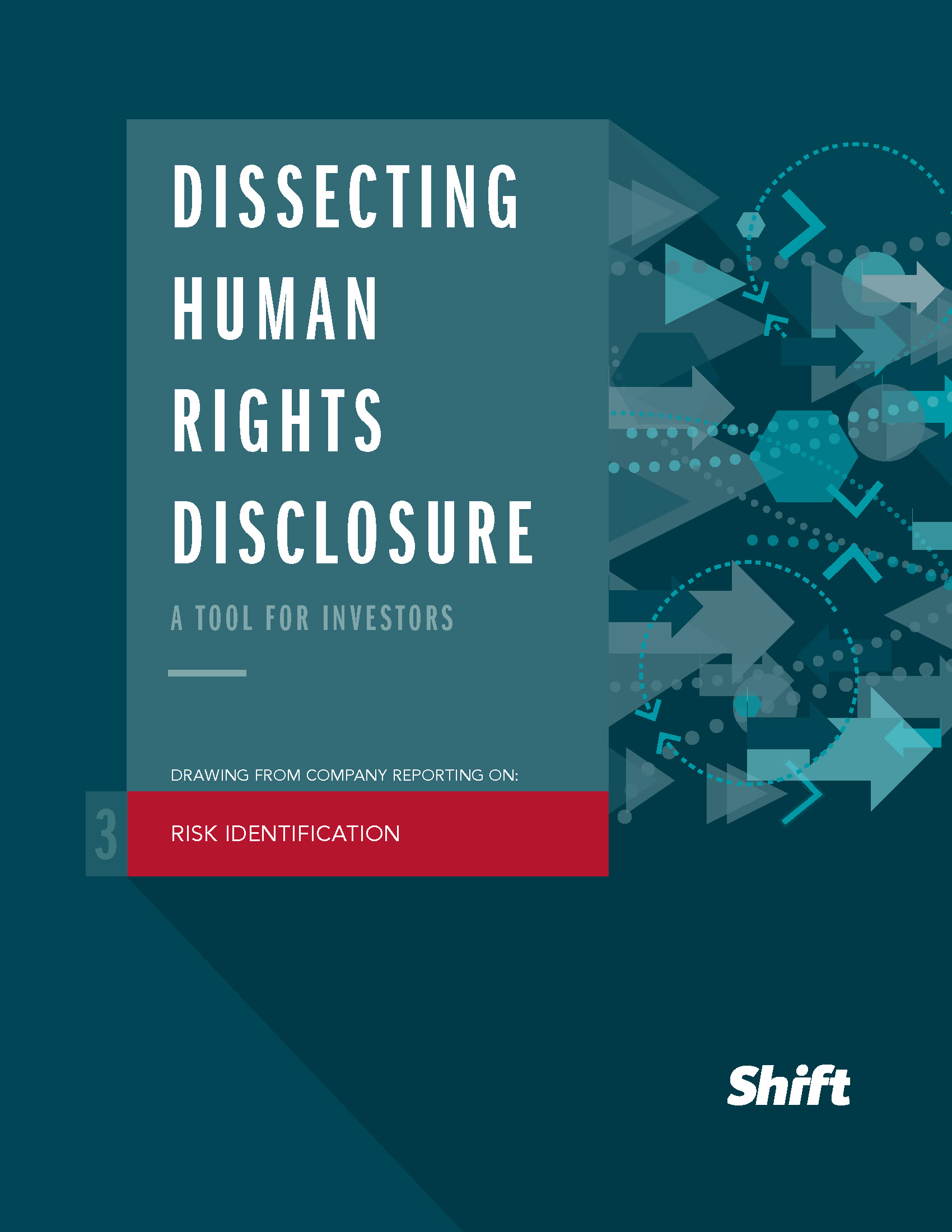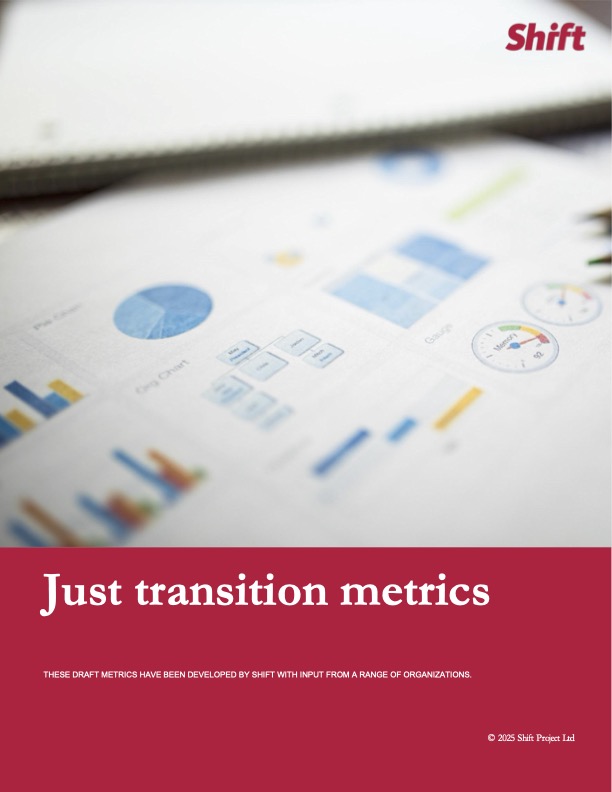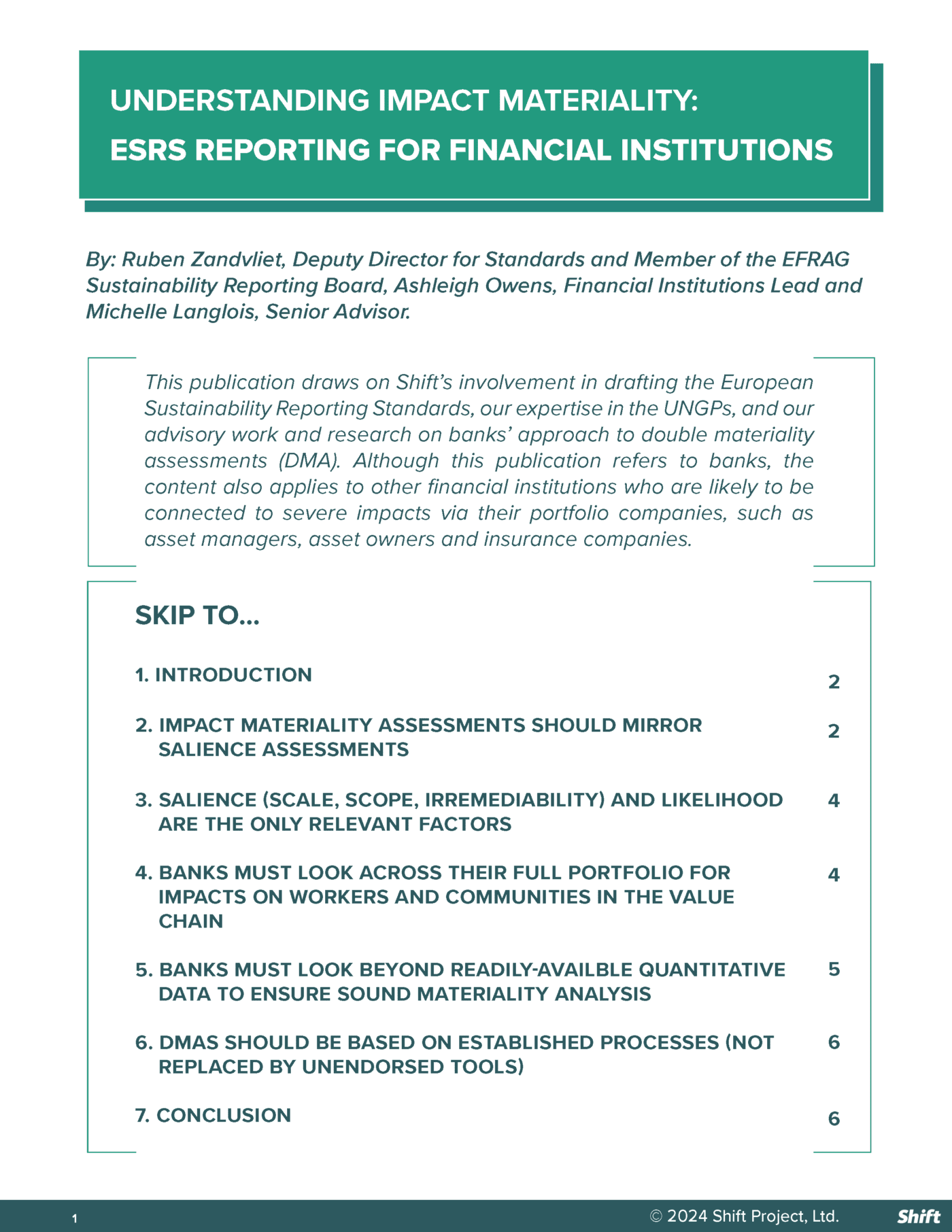Increasingly, investors are becoming interested in understanding to what extent companies are respecting human rights, and whether their efforts are likely to improve the lives of affected people. A good place to start is by reading a company’s human rights disclosure. But company reports are often hard to analyze. On the surface, many companies will seem to be doing the right thing. But, how can investors tell whether what they are reading is meaningful and in line with what the UN Guiding Principles expect? This collection of resources was designed by Shift to help investors apply a people-centered approach to gain deeper insights from company disclosure.
This resource examines five excerpts from companies on their reporting of identification and prioritization of human rights risks. In particular, it looks at:
- Whether the company only reports on issues it deems material to the business;
- If the only indicated external input for the human rights issues the company prioritizes is a generic survey;
- If a company’s list of material issues includes both individual human rights and a category of ‘human rights’;
- Whether human rights issues are listed in company disclosure without further explanation of how these relate to the business’s own operations and value chain.




